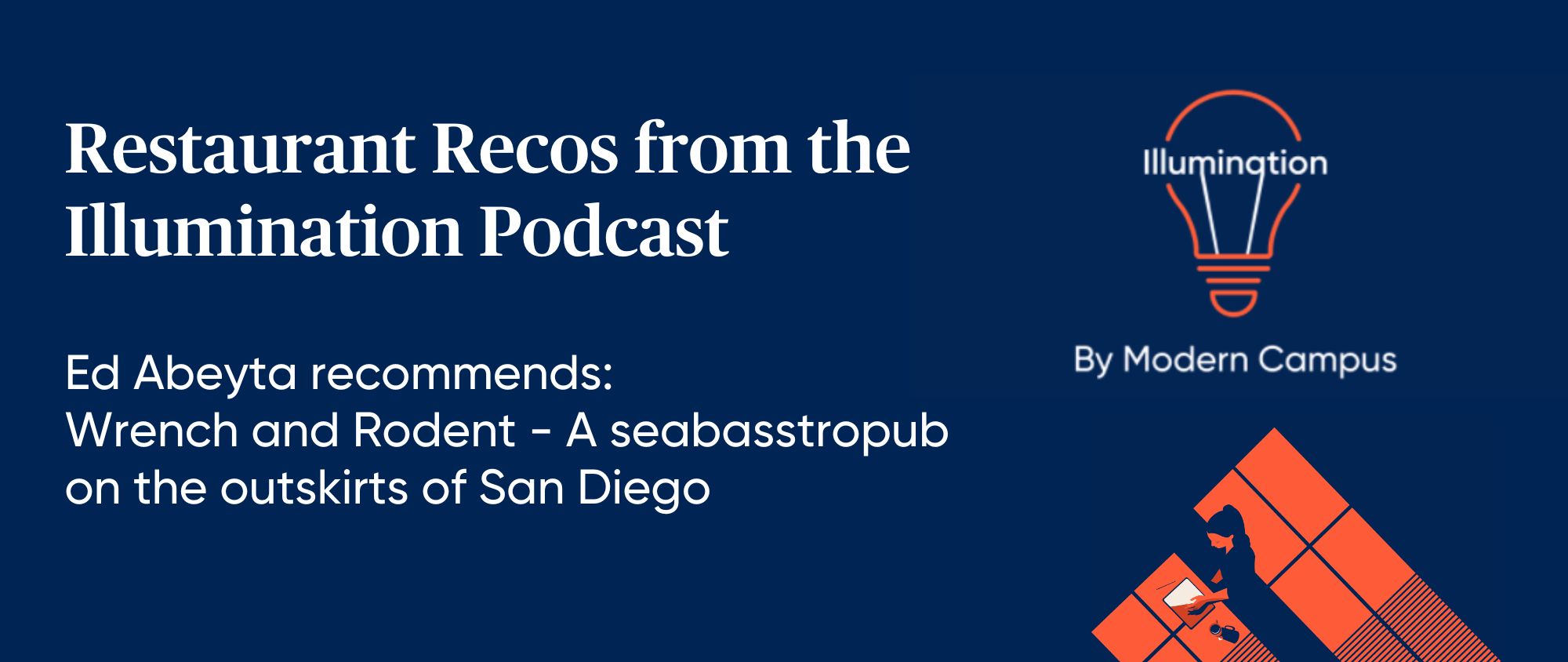What’s Cooking: How Continuing Ed Acts as the Institution’s Test Kitchen
Higher education is resistant to change. The necessity of online education brought about unforeseen changes that few were prepared for, and it’s past time for the industry to be more open to future shifts.
On this episode of the Illumination podcast, host Amrit Ahluwalia is joined by Ed Abeyta, Associate Dean for Education and Community Outreach at the University of California San Diego Division of Extended Studies. The two discuss re-envisioning continuing education’s role at an institution and how it’s time for a shift in thinking about program delivery.
The current state of higher ed is one of the most exciting in recent times, Abeyta says.
“When I started in this in this industry 25 years ago, I had done my research on post-secondary and adult education,” she says. “We had a different model. It was industrialized, just starting to look at the concept of a global society.”
Most students applied or enrolled to college in hopes of obtaining a traditional undergraduate or graduate degree.
Then on the other side of the coin, there was continuing ed — mostly non-credit programs, or an ancillary unit that was seen as a non-mainstream extension of the main campus.
“Fast forward a bit, and things changed,” Abeyta says. We start talking about the rapid changes in technology that got our world to where it is now, and then the pandemic hit.”
COVID-19 brought a seismic shift to so many industries, and higher ed is no exception. For an industry that is so set in its ways, a sudden monumental change to operations can be tough to manage.
Higher ed needs to be more open to new ideas and innovations to continue to attract new learners.
“We’re creatures of habit,” Abeyta says. “It’s pervasive across academia, the whole process of obtaining a degree and the approach we use to educate.”
The mindset of protecting the “cathedral” as Abeyta says, was set in motion back when the industrial revolution kicked off, and some have been hesitant to attempt to change their mode of thinking. Now it seems as if those practices are second nature.
Keeping the same educators in the same positions for so many years is just another aspect of higher ed’s aversion to change. Without teaching the educators themselves, they cannot grow and learn what needs to change in the first place.
“They’ve been in these roles for many years; they’re seasoned,” Abeyta says. “But what’s emerging now is that we in continuing education can be looked at as a resource.”
Continuing ed is the test kitchen for new ideas that don’t compromise on the integrity of the institution. Instead, continuing ed adds complimentary pieces of the higher education puzzle that may not have fit before. Changing the method of delivery to the more digestible continuing ed methods — shorter programs, smaller classes — can make foreign ideas fit easier at an institution.
“At our institution, we understand the process of enrollment, that a 10-week bootcamp isn’t the only way to do things,” Abeyta says. “We have processes to take enrollments and be creative in our processing. We have to be creative in how we deliver online or hybrid or corporate education. That flexible delivery process and how we bring education to the community adds an amazing mindset that not only changes how we think about CE, but how it connects to the are we serve.”
Virtual or distant, bootcamp or long form, hybrid or fully synchronous, there are options for educators to build a curriculum that will best serve the institution and more importantly, the student.
Listen to This Episode
Listen on Apple Podcasts Listen on SpotifyRSS Feed
Last updated: September 9, 2022



